“Patterns are created in everything,” observes textile artist Michael Kane. Flying birds form an unmistakable pattern; rain on a still lake less obviously so. You have to keep your eyes open: “We move too fast,” he says, “and miss so much.”
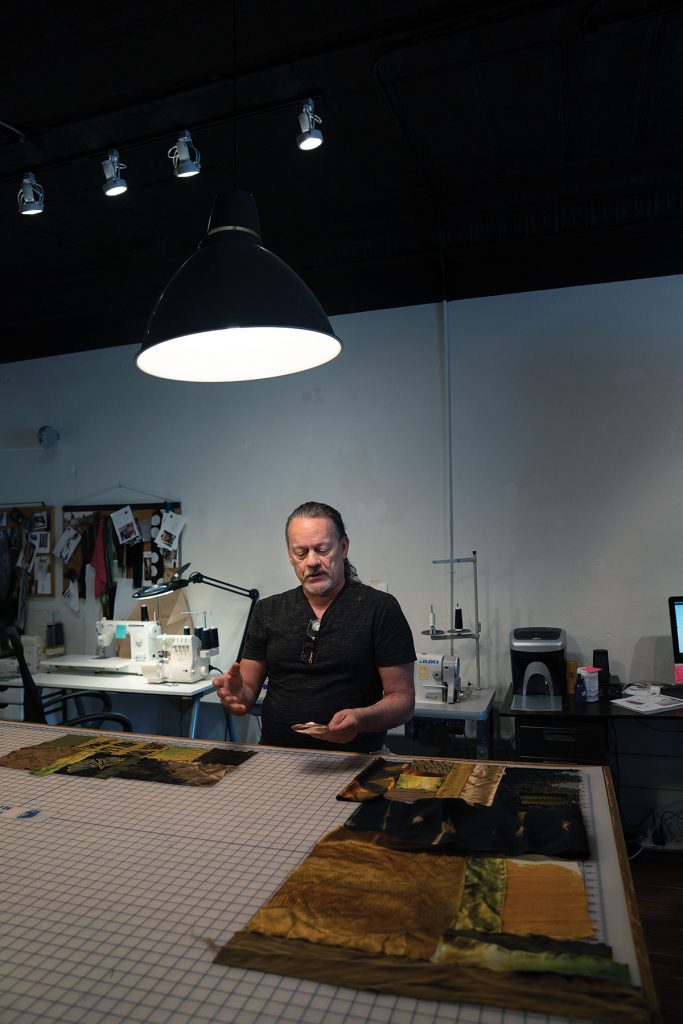
Portrait by Audrey Goforth
Kane started as a painter, but during a slow spell, found himself drawn more to the textile arts. “It fed my soul,” he says.
He became obsessed with learning about the various historic techniques used in manipulating and coloring fabric. This led him to Shibori, an ancient Japanese dyeing process where textiles are shaped by a variety of methods prior to the introduction of dyes. These include pole wrapping (arashi), board clamping (itajime), and stitch resists (ore nui), all of which Kane uses today.
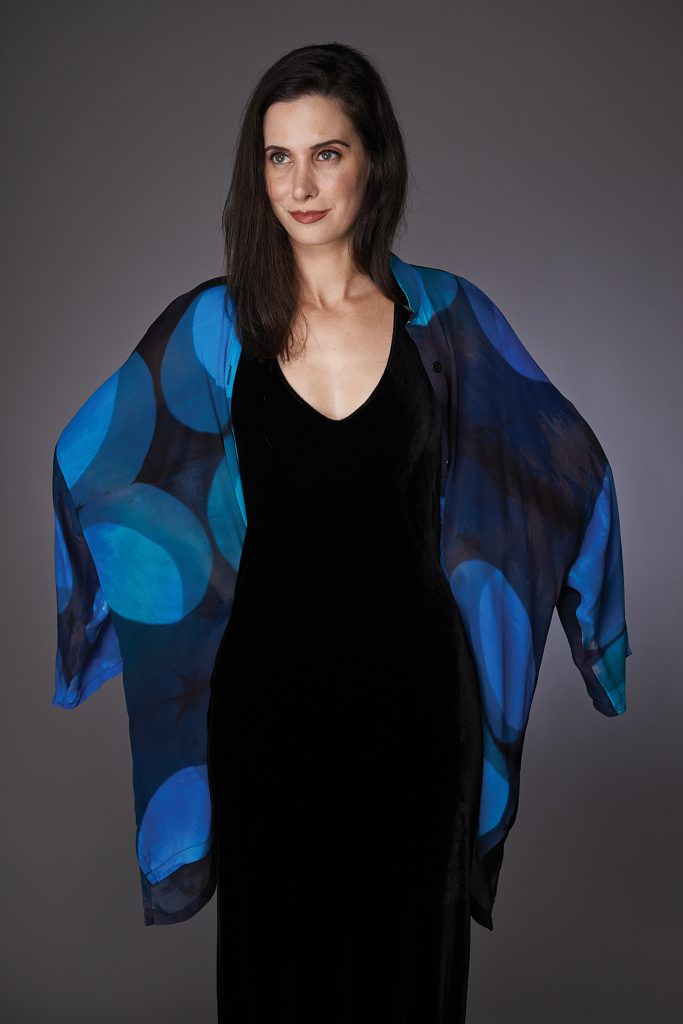
He was living in Kansas City, Missouri, when he began doing traditional Shibori on cotton T-shirts to sell at a local flea market. “That led to making silk scarves, higher-quality pieces for those kinds of clients”, says Kane. To further test the marketability of his work, he loaded up his van with his T-shirts and high-end scarves and hit the road for the West Coast on what was intended to be a month-long excursion, selling his art along the way. “The trip grew to three months,” says Kane. He traded his work with Native American artists in exchange for their handmade jewelry, and got noticed by “very upscale” galleries in San Francisco and Pasadena.
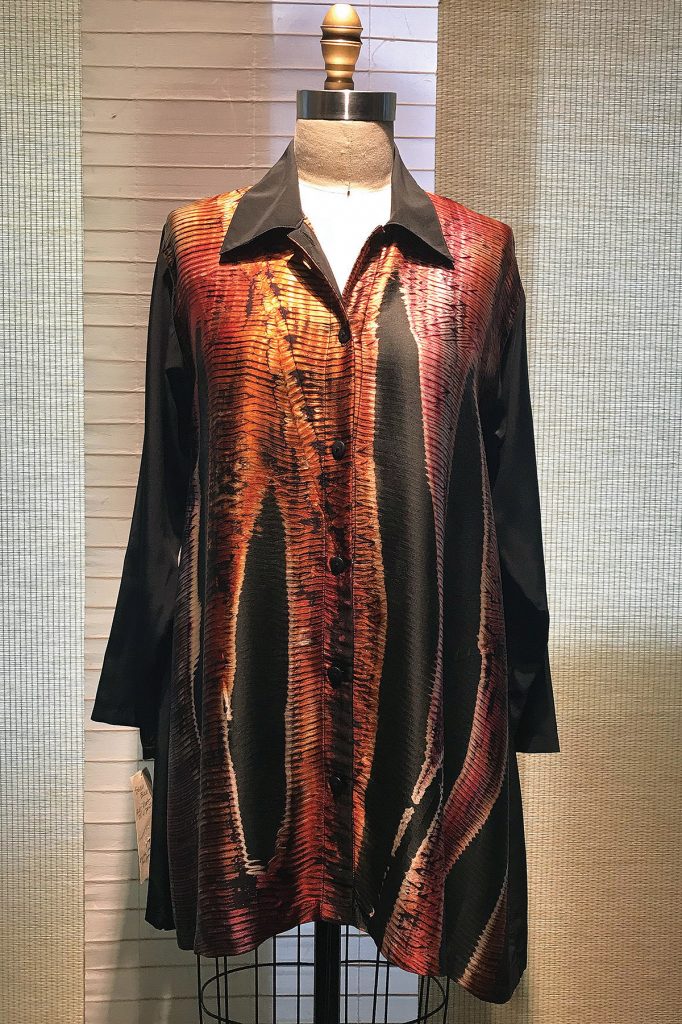
But in the end, he still needed to earn a living, and his textiles were not yet providing that. To make money, he cleaned businesses, managed a small toy-store chain, and, for ten years, worked at a 104-seat fine-arts theater, a job he says he “cherished.”
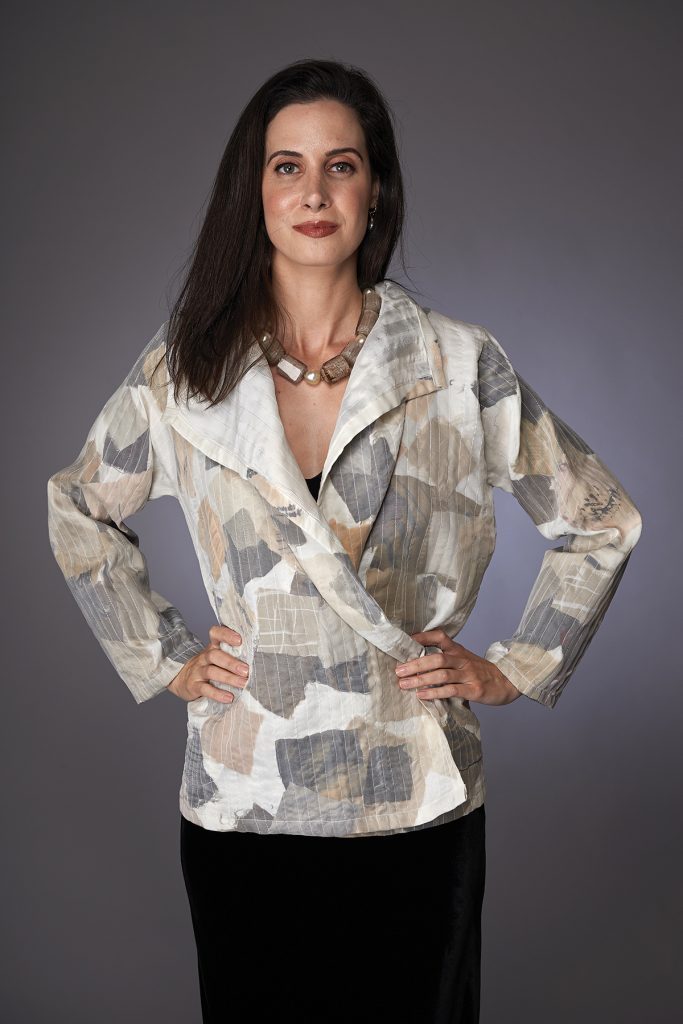
In creating his art-to-wear pieces, the now-full-time textile artist begins with silk — this can include traditional flat weaves like chiffon, crepe de chine, and charmeuse. “But now we have varying weave structures, which make everything more diverse,” he notes. “I [also] use a couple of wonderful textured silks. All are 100 percent silk. I like natural fibers. Nature is better than anything man can make.”
He explains that using black silk is good for “discharge” techniques (the removal of the dark hue to achieve certain effects), but he’s now working primarily with white silks, which allows a fuller spectrum of applied color: “The ‘painter’ [in me] is emerging, as I always knew it eventually would.”
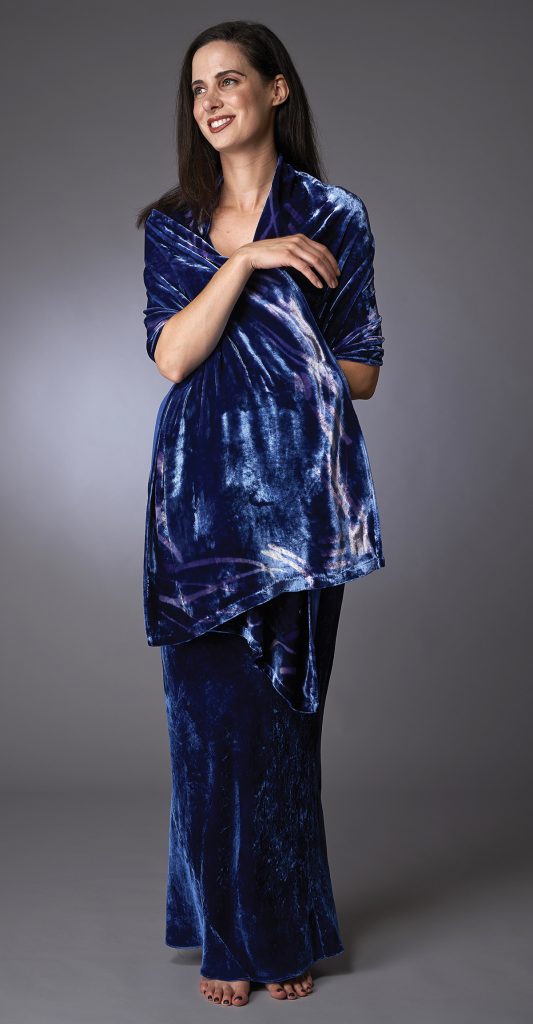
Photo by John F. Cooper
Michael Kane, 735 Haywood Road Suite 110, West Asheville, open 1-6pm. Kane’s work is sold at Bellagio Art to Wear (5 Biltmore Plaza, Biltmore Village), which will feature the artist’s apparel in a trunk show happening Saturday, Sept. 7 (reception 4-6pm) and Sunday, Sept. 8. For more information, visit michaelkanestudio.com, e-mail mkstudio110@gmail.com, or call 828-467-6296.